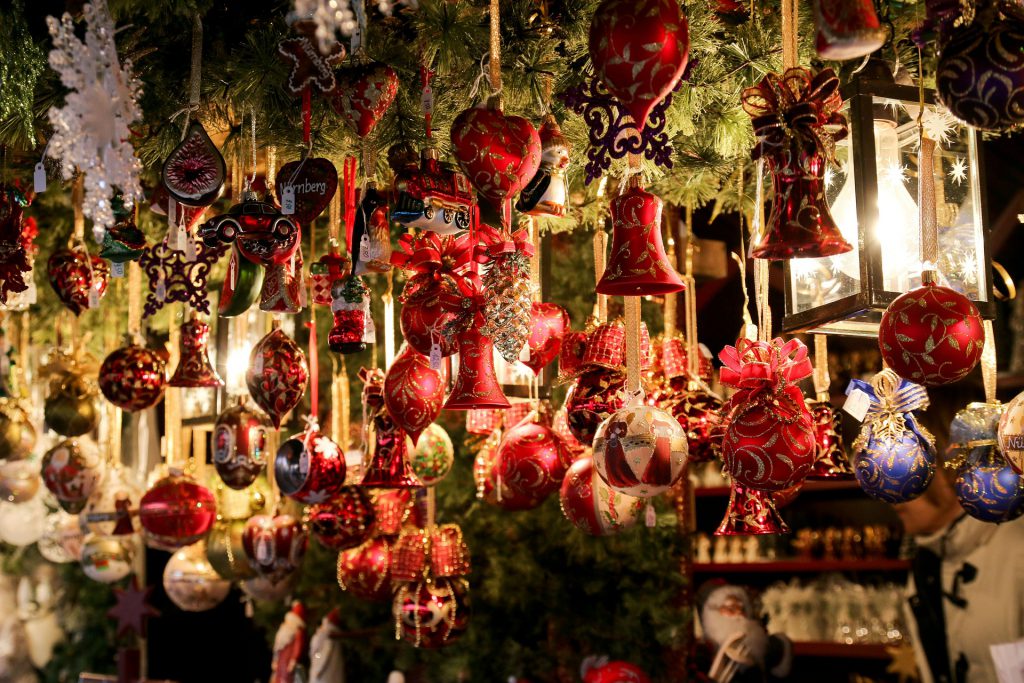
Its is feasible that a form of Christmas decorations dates back to the Roman winter festival of Saturnalia. They attached candles to trees for Sol the sun god, and replicas of Bacchus, the fertility god. The ancient Germanic tradition was to attach candles and fruit to tree branches, for their god, Woden. Martin Luther is believed to have decorated a tree with candles in the 16th Century.
But it is more likely that the beginnings of the modern Christmas decoration was from the German Christmas Markets of the 16th Century. As souvenirs, visits to the markets, people would purchase shaped gingerbreads and ornaments made of wax. 1601, there are accounts of trees in Strasbourg being decorated in ‘wafers, golden sugar twists and paper flowers’.
Christmas Tinsel
Tinsel was also invented around this time, approximately 1610. Machines had been invented to turn real silver in to wafer thin strips that formed the tinsel. Silver continued to be the main material up to the middle of the 20th century. A mix of lead and tin was also used but was not a durable. This remained the main material until the advancement of manufacturing and cheap aluminium-based tinsel took over and by the 1950’s.
During the Victorian Era most decorations were home made. Stars and snowflakes, paper baskets for sugared almonds, candles and an angel for the top of the tree.
Glass Christmas Decorations
It was in the 1850’s (although possibly can be dated to 1847) that the area around Lauscha, Germany, the first glass ornaments were produced, the forerunner of the Christmas Bauble. Some scholars believe that Hans Greiner was the inventor. Glass makers found that they could make moulded glass ornaments instead of their traditional glass barometers, goblets, canes and so on. Firstly they started making replicas of fruit but soon developed moulds of children, hearts, saints, stars, there was no end to the shapes they could produce.
By the 1870’s, these new Christmas glass ornaments were being imported into Britain. Due to their cost the more you had the more a status symbol they became. Although during this time they were still in competition with the nation flag, flags of the Empire and flags of the allied countries. Along with traditional home made decorations and small toys. In America one of the first to import the German Christmas ornaments was F.W.Woolworth in the 1880’s and by the 1890’s was selling over $25 millions worth.
Other ornaments came from Dresden, close to Lauscha. But instead of glass the area was famed for its pressed and embossed paper ornaments. At the end of the 19th Century, pressed tin became popular, with brightly coloured lithographed surfaces.